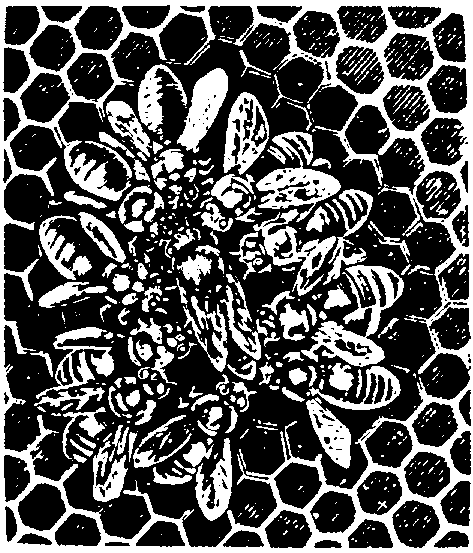(aka Mjod)
![]()
![]()
![]()
(aka Mjod)
Meads are produced from honey, yeast, water, and sometimes herbs and fruits are added. Wine, Champagne, sherry, mead, ale or lager yeast maybe also used. It is likely that Mead was made even before the wheel was invented. Cave paintings have been found depicting the making of Mead. Mead is more a wine than beer, with a final alcohol level anywhere between 10 and 18 percent. Wine yeasts, which have a higher alcohol tolerance, may ferment slower at first (although some are remarkably fast) but will ferment more completely than ale or lager yeast. They are also less likely to produce "off" tastes which take a long time to age out after the mead is finished.
 Mead in its matured state is very much like a good
white wine, and may reach full maturity within two or three years. Mead made
from stronger flavored honeys may taste unbalanced unless it is matured for
perhaps as long as eight years. Meads are usually made from single-blossom
honeys such as clover, acacia, orange, rose, wild-rose and rosemary. Eucalyptus
blossom honey has a peculiar bitter flavor and shouldn't be used to make
Mead. Some honey is light in color and some dark. With a few exceptions the
darker honey is more strongly flavored. The lighter and milder honeys are
usually more suitable for Mead. Good Mead demands good honey. Some Mead makers
do not boil or brew their product as this has a tendency to drive off the
light flavors.
Mead in its matured state is very much like a good
white wine, and may reach full maturity within two or three years. Mead made
from stronger flavored honeys may taste unbalanced unless it is matured for
perhaps as long as eight years. Meads are usually made from single-blossom
honeys such as clover, acacia, orange, rose, wild-rose and rosemary. Eucalyptus
blossom honey has a peculiar bitter flavor and shouldn't be used to make
Mead. Some honey is light in color and some dark. With a few exceptions the
darker honey is more strongly flavored. The lighter and milder honeys are
usually more suitable for Mead. Good Mead demands good honey. Some Mead makers
do not boil or brew their product as this has a tendency to drive off the
light flavors.
Mead has been produced and enjoyed since before the dawn of recorded history. Because of its antiquity, mead has acquired an almost magical reputation in our mythologies. For example, the term "honeymoon" is intertwined with the custom of drinking honey-based mead for a month (moon) after the wedding; this practice was said to ensure baby boys.(It was the accepted practice in Babylonia 4,000 years ago that for a month after the wedding, the bride's father would supply his son-in-law with all the mead he could drink. Mead is a honey beer, and because their calendar was lunar based, this period was called the "honey month" or what we know today as the "honeymoon".) Mead making was once the province of a select, trained guild.
Mead is classified not by the kind of honey that it is made of, but by what else may have been added to it for flavoring. Traditional mead is made with only honey, water, and yeast, plus perhaps a small amount of acid (to balance the sweetness). Metheglin is mead made with added herbs or spices, such as cloves or cinnamon. Melomel is mead made with the addition of fruit or fruit juice to traditional mead. Melomel may also contain spices, as metheglin does. Cyser is a melomel made with apples or apple juice. Pyment is a melomel made with grapes or grape juice. Hippocras is a spiced pyment. Sack is a name (or an adjective) for stronger meads made with more honey than usual.
Honey is a remarkable liquid. Made by humble insects, it is far more than a simple mixture of sugars. Honey contains, in addition to a rather complex mixture of sugars, enzymes, proteins, organic compounds and trace minerals. It is these interesting compounds, present in minute quantities that give honey its distinctive flavor and characteristic aromas. Many of these are carried over into a mead produced from these honeys and lend a similar, recognizable distinction to the finished mead. Honey is made from the nectar of flowers, and is named according to the type of blossom from which the nectar is collected by the bees. There are a few plants whose nectar is toxic to man. Rhododendron nectar has long been under suspicion in this respect. Clover is the largest single source of nectar for mead.
There are many kinds of honey, based on which flowers the bees collected the nectar from. Bees aren't loyal to any particular flower, so any characterization of honey as being from a particular source (for example, "blackberry honey") can vary from absolutely true to a rough generality, depending on what flowers the bees can find and how interesting they find them. Honeys range in taste and color from the light clover through alfalfa to stronger tasting (and darker) such as buckwheat. There are many unusual honeys to be found where there are unusual local flowers.